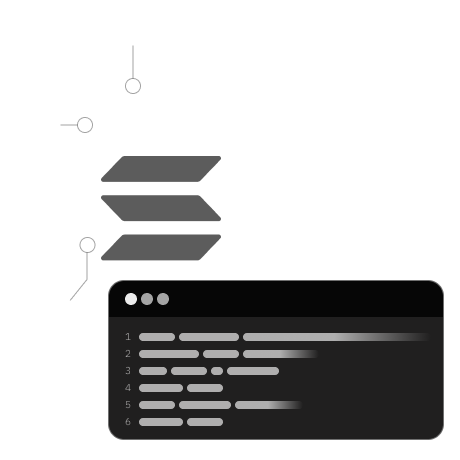This section focuses on understanding the import functionality in Solidity, a crucial aspect for building Solana programs.

b
Introduction to Solidity for Solana
In this lesson, you will:
- Gain an understanding of Solidity tailored for Solana development.
- Learn about the unique aspects of Solidity.
- Discover practical applications for programs developed using Solidity.
This lesson introduces you to Solidity, the primary programming language for Ethereum smart contracts, adapted for Solana. Originally developed in 2015, Solidity is high-level, object-oriented, and incorporates elements from Python, C++, and JavaScript. It's a key language for creating diverse blockchain applications, from voting systems to crowdfunding platforms.
Solidity, emerging from Ethereum, offers a range of features:
- Smart Contract Foundation: Solidity is designed to create smart contracts, which are integral to most blockchain platforms.
- Inspired by Established Languages: Its design is influenced by Python, C++, and JavaScript, making it accessible to developers from various backgrounds.
- Support for Complex Constructs: It supports user-defined types, libraries, and other advanced features.
- Diverse Application Range: Solidity enables the creation of various contracts, like voting systems, auctions, and multi-signature wallets.
Solidity in Solang Context:
- Compatibility: Solang targets compatibility with Ethereum Foundation's Solidity Compiler (version 0.8), with some exceptions.
- Differences:
- Outputs WebAssembly or Solana SBF, not EVM bytecode.
- Uses little-endian encoding for packed encoding.
Key Components in Solang:
- File and Contract Structure
- Imports
- Pragmas
- Data Types (specific to Solana, like address)
- Constructors
- Functions
Next, we'll delve into the File and Contract Structures of a Solidity program compiled with Solang, laying the groundwork for your Solana programming skills.